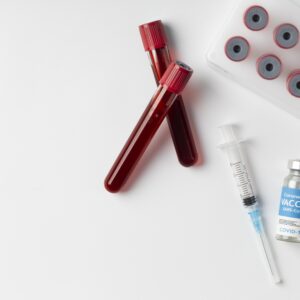The Direct Coombs Test, also known as the Direct Antiglobulin Test (DAT), is a blood test used to detect antibodies attached to the surface of red blood cells (RBCs). It helps diagnose conditions causing immune-mediated hemolysis, where the body’s immune system mistakenly attacks its own red blood cells.
Purpose of the Test
This test is primarily used to:
- Diagnose autoimmune hemolytic anemia (AIHA), a condition where the immune system destroys RBCs.
- Investigate hemolytic disease of the newborn (HDN), where maternal antibodies attack the baby’s RBCs.
- Detect transfusion reactions, which occur when the immune system attacks transfused RBCs.
- Monitor patients with certain autoimmune diseases, such as lupus or chronic lymphocytic leukemia (CLL).
Test Procedure
A blood sample is taken and mixed with a Coombs reagent, which detects antibodies or complement proteins bound to RBCs. If agglutination (clumping) occurs, it indicates a positive result.
 Direct Coombs Test (Direct Antiglobulin Test – DAT)
Direct Coombs Test (Direct Antiglobulin Test – DAT) Direct Coombs Test (Direct Antiglobulin Test – DAT)
Direct Coombs Test (Direct Antiglobulin Test – DAT)